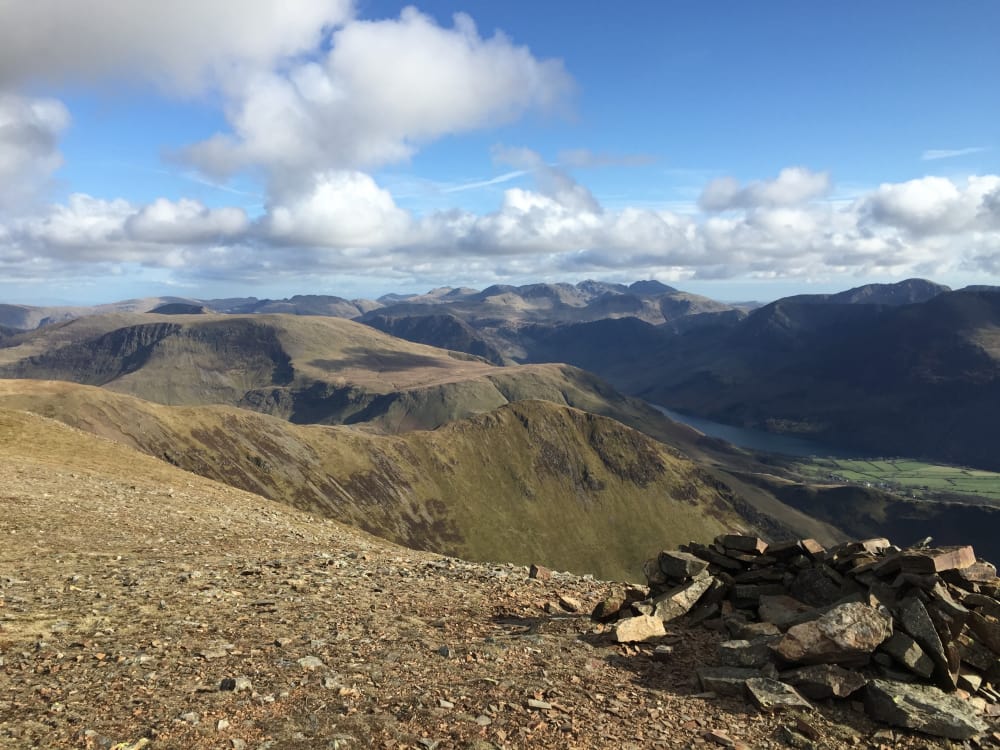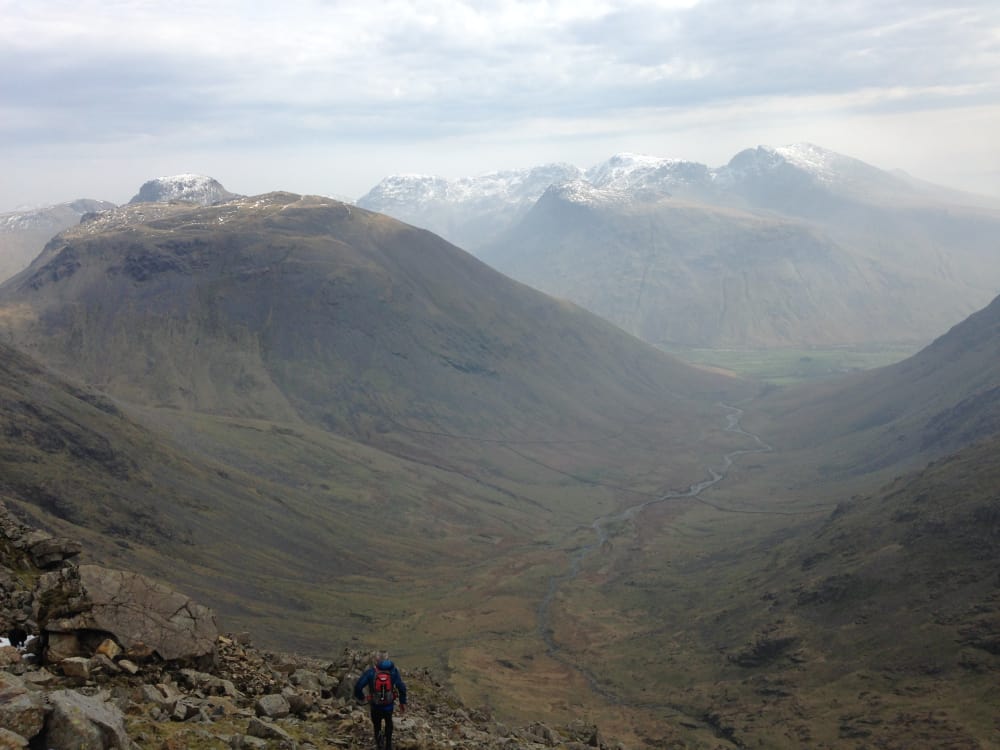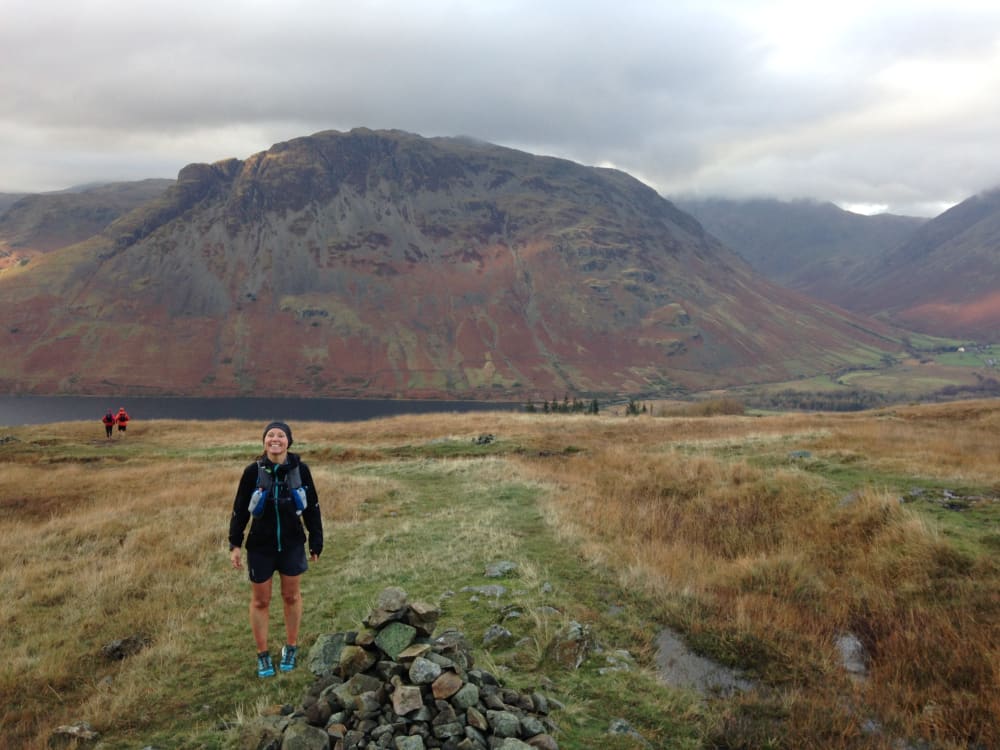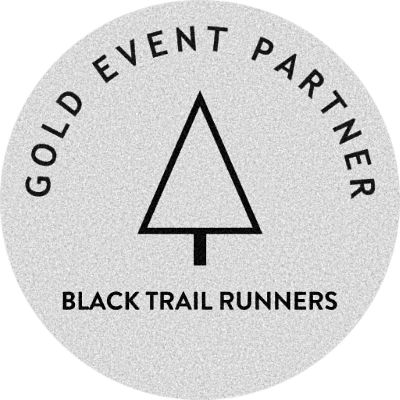3 Apr 17 by James Elson
Mountain Journals II: The Wainwrights (Interview)
Last month, Centurion Running RD, James Elson completed his round of the 214 Wainwright Fells in the Lake District. Team runner Debbie talks to James about his three-year journey.
1) Firstly, why the Wainwrights? And did you do your first Wainwright with a view to completing them all?
I love the Lake District and I wanted to learn to run better in the mountains. The fact that there are 214 Wainwrights is an arbitrary number. Alfred didn’t have a particularly solid reason for choosing the mountains that he did - but they do encompass pretty much the whole of the Lake District. I wanted to see the whole area. Every fell, every valley and every lake is so different from the next that there is almost an endless amount of exploring to do.
2) You live quite a distance from the Lake District. How did you manage to fit it in around race organising, coaching and family?
In two ways really. I did most of them over winter times in our off season. Things are much quieter for us at Centurion between December and March, so I would try to pick weather windows and make single or two day trips. We’ve also had quite a few family holidays to different areas of the Lakes during which I’d get round to some of the harder to reach areas.
3) Ticking them off in three years is quite quick, especially with the distance you had to travel. Any tips for anyone looking to compete the round?
If doing them in a short space of time is your aim, plan your days out well. I didn’t plan and got to about 100 tops before I realised I wanted to actually start aiming to visit them all. By the time I had about 50 left, there were odd ones scattered all over the Lakes that required time and energy just to get near, let alone get up when I could easily have linked them in to other days out had I planned them better. I ended up visiting some of the tops a dozen or more times.
4) The Lake District is one of the one most beautiful places in the world, tell us about your favourite day.
That’s really hard, there have been so many great days. Maybe one of my favourites was the Coledale Horseshoe plus half a dozen others which I ran in April 2015. It was the first really warm day of the year, blazing sunshine and not a breath of wind. I pushed really hard for about three hours and felt fantastic.

View across to Whitless Pike from Grassmoor on the Coledale Horseshoe
5) It's also known for its awful weather, tell us about your most challenging day.
One November I took myself off up Haystacks above Buttermere and then ran the ridge line across High Crag, High Stile and Red Pike. The weather was atrocious and every path was a torrent of water. I’ve never seen before or since so much water coming off the hills. Coming off of Haystacks the rock was so wet I just couldn’t get any grip and I began to think that it wasn’t going to end well. But I persevered and got to High Stile but then navigated the wrong way off of the summit and started descending down towards Ennerdale. The visibility was about 10 metres and it was so windy I was struggling to stand up. I had to really carefully re trace my steps using the map and compass (the needle on my GPS was spinning round and round because of the conditions) and eventually found my way to the summit of Red Pike before I teetered my way off of the front side down to Buttermere. My hands were frozen solid. I really felt that day that had I not been able to read a map and had a compass and the OS sheets with me I would have had a major problem.
6) You completed the Bob Graham Round in 2014. Is it as tough as they say?
Yes I completed the BGR in 2014, it’s a circuit of some of the most prominent peaks in the Lake District. You have to visit 42 tops (39 are Wainwrights) and it has to be completed within 24 hours. Numbers wise it’s about 60 miles and 27000 feet of climb but the difficulty really is the underfoot conditions together with the likely navigational difficulties both at night and in any kind of hill fog which is pretty common fare. It’s tough, I think it’s wildly underestimated by people who haven’t been on that kind of terrain. I don’t think it’s as tough however as the Paddy Buckley and likely not the Ramsay Round either, the Welsh and Scottish equivalents.
7) There are some fast guys looking to have a go at the BGR this summer. Do you think the record might go?
It depends. If you look at Billy Blands record 13:53, nobody has yet come with half an hour of it. As a fell racer, he still holds course records at events like the Borrowdale, which some of the elite level runners going after his record potentially this year, have tried repeatedly to better and failed. So it makes you wonder if they can do it.
There are two things in favour of those trying today over Billy. One is that there is effectively a trod/ path around the entire BG route nowadays because so many people run sections as days out. That makes some of the navigation easier in poor weather and potentially a little faster going underfoot. Secondly, they have a time to beat. When Billy ran it, he had only the stars to aim for so who knows what he could have done if he’d had to actually go quicker.
I also think Jasmin Paris’ round from last year has really opened some of the elite level fell runners’ eyes to what is possible. She has opened a door herself I think with a run of such a high calibre.
I do think Killian is capable of bringing the record down. I don’t see the underfoot conditions presenting any kind of obstacle to him. I would imagine his descending ability will allow him to take time out of the record splits. His biggest problem will be getting people together that can keep up. I imagine he will have to look at splitting each leg down in to smaller components in terms of pacers, to allow him room to move as fast as he is capable of.
8) You were travelling and climbing in all seasons. Any advice for winter wainwrighting?
The planning becomes much more important. The conditions above just 700 or 800 metres in winter time in a storm can be absolutely brutal. Reading the weather forecast is the number one thing and understanding through experience how those conditions relate to on the ground. For example, wind speed is a big factor in terms of chill factor and how cold it can feel, but also in terms of the practicality of even being able to move. I’m quite light, and if wind speeds exceed 65 mph, I can’t stand up. So if winds are gusting in excess of that or are a steady 50mph or more, I’ll not bother going up high.
Hill fog is a major issue in terms of navigation in all seasons but particularly winter. Over time you get used to navigating in cloud and I am comfortable going out in very poor visibility and or darkness on to fell terrain. But I try to avoid going up when both are combined unless I am on major paths. Its’ very disorientating.
Usually you’ll encounter mixed conditions on the ground in terms of snow, ice and wet/ dry rock and bogs during winter. Knowing when you’re likely to need spikes/ crampons and potentially even an ice axe is important. It’s possible to do all of the Wainwrights without a rope though. Staying tuned to the Fell Top Assessors reports available every day through the winter gives you an accurate picture of what the ground conditions are likely to be out.
In terms of bogs, it’s worth pointing out that there are one or two areas in the Lakes that I’ve come very close to having a major problem in. Usually they are around outflows from tarns, last month I went up Cold Pike after dark and navigated poorly straight across an outflow from a tarn under the summit of Cold Pike. Two steps in and I was stomach deep. Some of the bogs in Snowdonia are far worse but you can still find yourself trapped chest deep or worse if you pick the wrong line in the Lakes. Learn the different colour of the grass and what a bog looks like - bright green and dark brown should be avoided at all costs.
Kit wise the list of what you should carry is greater. Number one is map and compass, even if you have a functioning GPS or the OS App on your phone. My phone has died so many times in winter due to cold. Those things are fine for quick reference but If you don’t know where you are on the map and the mist rolls in, you could be in big trouble. Taking spare gloves, waterproof gloves, Water or windproof jacket and trousers, goggles if it’s due to snow, survival bag, head torch even if you are going out in the morning, full set of base layers. Because I did so much of the running/ climbing on my own, I needed to be sure that if the worst happened and I had an accident that stopped me from getting off the hill in a place with no reception, I would be able to spend a night out maybe not comfortably, but definitely safely. You can go slightly more lightweight if there are two of you.
If you are up to speed with your kit, plan carefully around the forecast the very best days out on the mountain can be had in winter. And don’t be fooled by the relatively low height of the Lakeland Fells. Conditions on the top on a stormy winters day can be as bad as anything anywhere.

Skirting Pillar, looking across to the Scafell Massif on a March day
9) It’s good to get family involved in fell walking/running. Which wainwrights would you recommend for families/kids?
There’s a few that stand out as very simple short walks without any kind of hazards at all, so that you can take kids who are barely walking as yet to the tops. Ling Fell, Sale Fell, Latrigg, Holme Fell, Baystones and Loughrigg are all examples of that. I would imagine once kids reach 5 or 6 there aren’t many tops that would be beyond them. The only one that has a fairly precipitous drop off the top is Helm Crag which involves a short but exposed scramble on the Lion and the Lamb summit prominence. Easier rocky climbs are available widely and they can be really exhilarating for young kids but perfectly safe if you keep your eye on them,
10) You were also competing in ultra-races, so the hills must have been an important part of your training?
I’ve always just looked at it as good strength training for ultras yeah, but big days out on the hills have at times affected training a little in terms of consistency!
11) How did you feel when you finished? Is there a void or are you quite content?
Both. Because it’s a relatively small area I sat on top of High Hartsopp Dodd the final one and looked out across most of it on the Sunday evening and felt both sad and happy I’d visited all those fells.
12) The all-important question, what’s next?
I will keep going back to the Lakes, but next in terms of similar hill/ mountain challenges is Wales and the Paddy Buckley (welsh equivalent of the BG). I’d like to give it a go in time, once I know the route well enough.

The Interviewer, Debbie, in front of Yewbarrow














